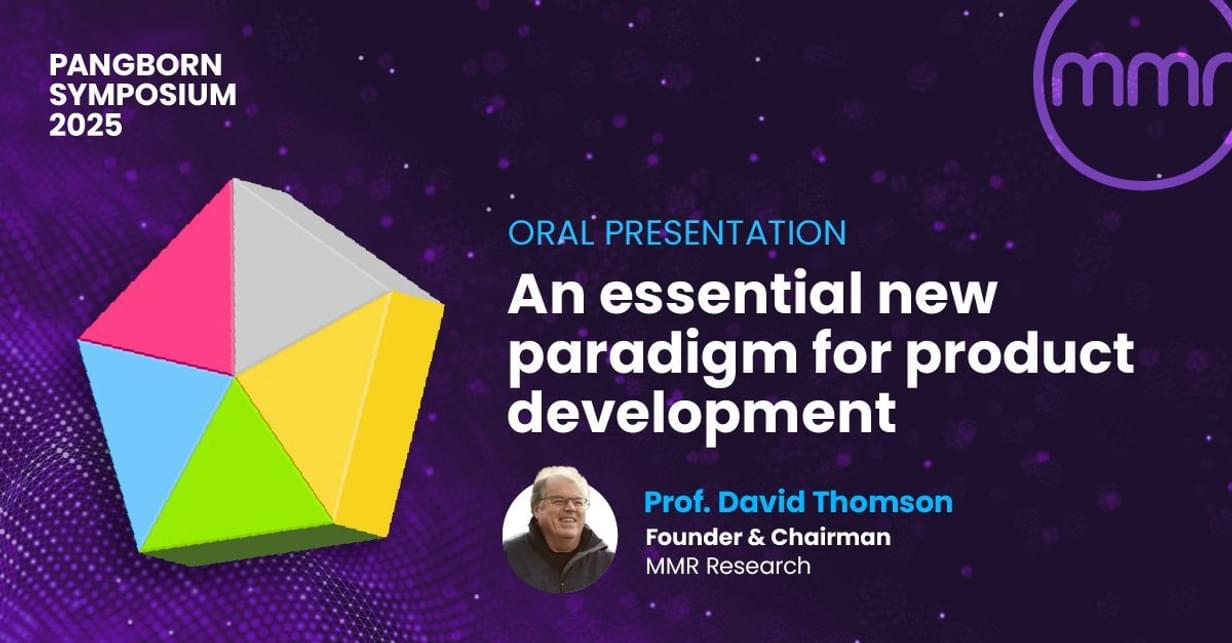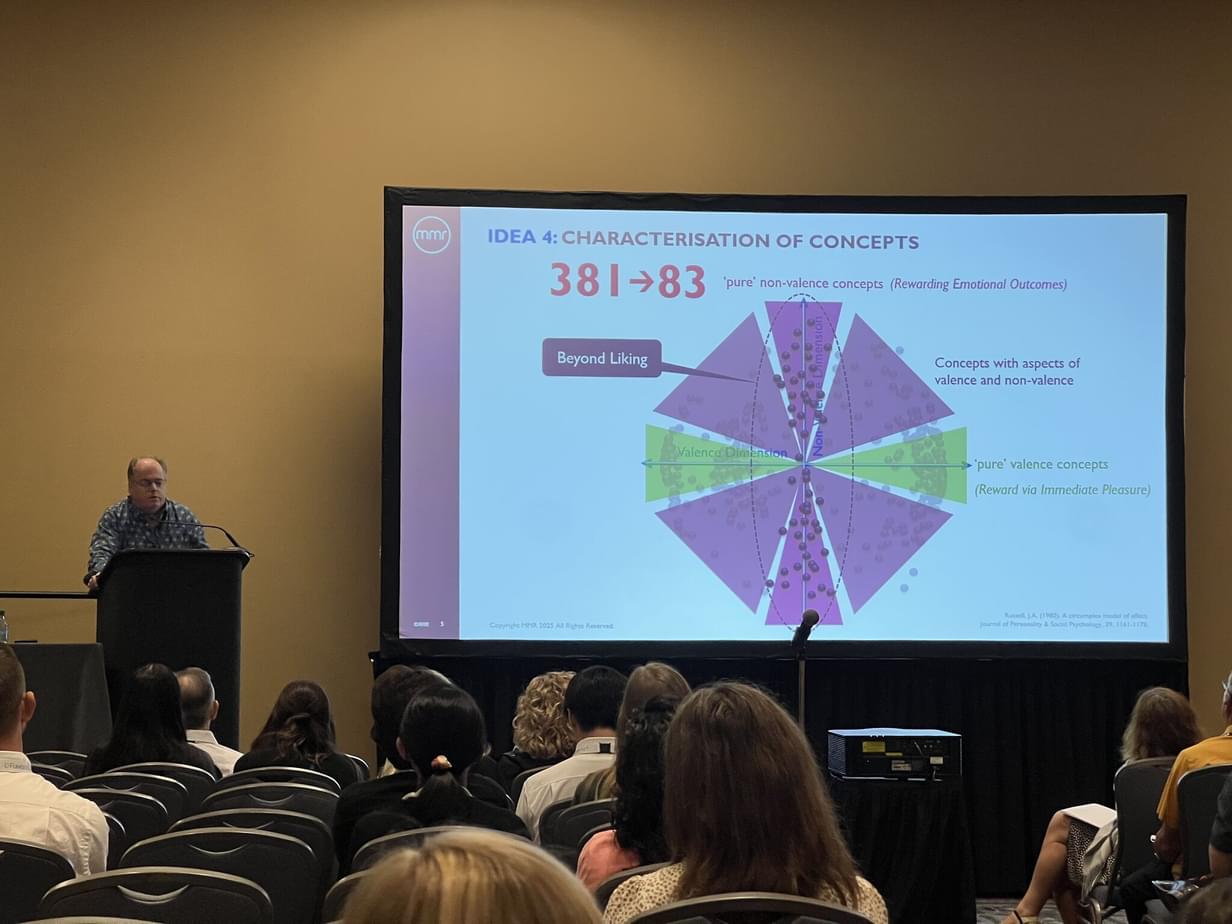Pangborn 2025: An Essential New Paradigm for Product Development
By Prof. David Thomson
An Essential New Paradigm for Product Development
At Pangborn 2025, MMR’s founder, Prof. David Thomson, set out a new perspective on product development that challenges long-standing assumptions in consumer research. His presentation, An Essential New Paradigm for Product Development, argued for a shift beyond measuring “liking” alone, toward a deeper understanding of the emotional motivations that drive real-world consumer choices.

Moving Beyond Liking
For decades, consumer research has relied heavily on “liking” as the primary metric for evaluating products. But as David pointed out, liking alone fails to predict what consumers will actually choose in real-world contexts. This is because behavior is not driven solely by immediate pleasure, it’s guided by more complex emotional rewards.
This set the stage for the central idea of his talk: if we want to predict consumer behavior with confidence, we need to understand the routes to reward that underpin decision-making.The Science of Reward
David introduced the Dual Aspects of Reward Theory (DART) as a framework for thinking about motivation. There are two distinct aspects
- Immediate Pleasure – the direct enjoyment we experience in the moment.
- Rewarding Emotional Outcomes – the longer-term, sometimes less obvious payoffs, such as feeling confident, sophisticated, or comforted.
Consumers often choose products not just because they taste good or work well, but because they deliver these desirable emotional outcomes. Understanding both aspects of reward allows researchers and developers to see beyond the superficial and into the deeper-rooted psychological drivers of choice.
The Power of Concepts
Drawing on the work of neuroscientist Lisa Feldman Barrett, David emphasized how the brain creates concepts based on the sensory signals it receives. These concepts, shaped by experience and language, don’t just influence what we perceive; they also determine the emotional outcomes we experience.
What matters for product developers is how these concepts map to the different aspects of reward. By going beyond descriptors of immediate pleasure (liking) and capturing how products and brands deliver deeper emotional rewards, researchers can better predict consumer choice and long-term brand affinity.

Motivational Archetypes
To illustrate this in practice, MMR conducted a large-scale study with 5,000 UK consumers across nine categories, generating over 20,000 brand profiles. From this work, we identified recurring motivational patterns; conceptual pathways that consistently explain why consumers choose one product over another. These archetypes aren’t rigid categories but are examples of the reward pathways consumers follow. Two brands with similar liking scores can succeed or struggle depending on which of these pathways they activate and how well they align with consumer motivations.
Case Studies in Action
Consider chocolate: Cadbury, Lindt, and Galaxy may all score highly on liking, yet their market success stems from very different reward pathways. One leans into indulgent sophistication; another offers playful comfort. These conceptual distinctions drive distinct emotional outcomes, making each brand more effective for different consumers and occasions.
A similar story emerged in carbonated soft drinks, where “orange” brands varied not because of flavor, but because of the reward routes they activated. The emotional pathways, not the sensory attributes alone, determine consistent consumer choice.
A New Direction for Innovation
The message for brand owners and product developers is clear: optimizing products around liking is not enough. Understanding the different routes to reward in your category and embedding these into product and brand strategy enables teams to:
- Predict real-world consumer choice with greater confidence
- Design products that resonate across categories and cultures
- Build brands capable of sustaining long-term loyalty

Looking Ahead
David stressed that this is more than a methodological shift, it’s a fundamental change in how the industry should think about product development. Embedding ‘routes to reward’ into innovation pipelines requires new tools, measures, and mindsets.
Liking remains important, but on its own, it isn’t enough. When enriched with an understanding of the other drivers of choice, it becomes a more powerful predictor of real-world behavior.
At MMR, we believe this paradigm has the potential to reshape product innovation, helping brands design products that not only satisfy but also connect meaningfully with people’s lives.